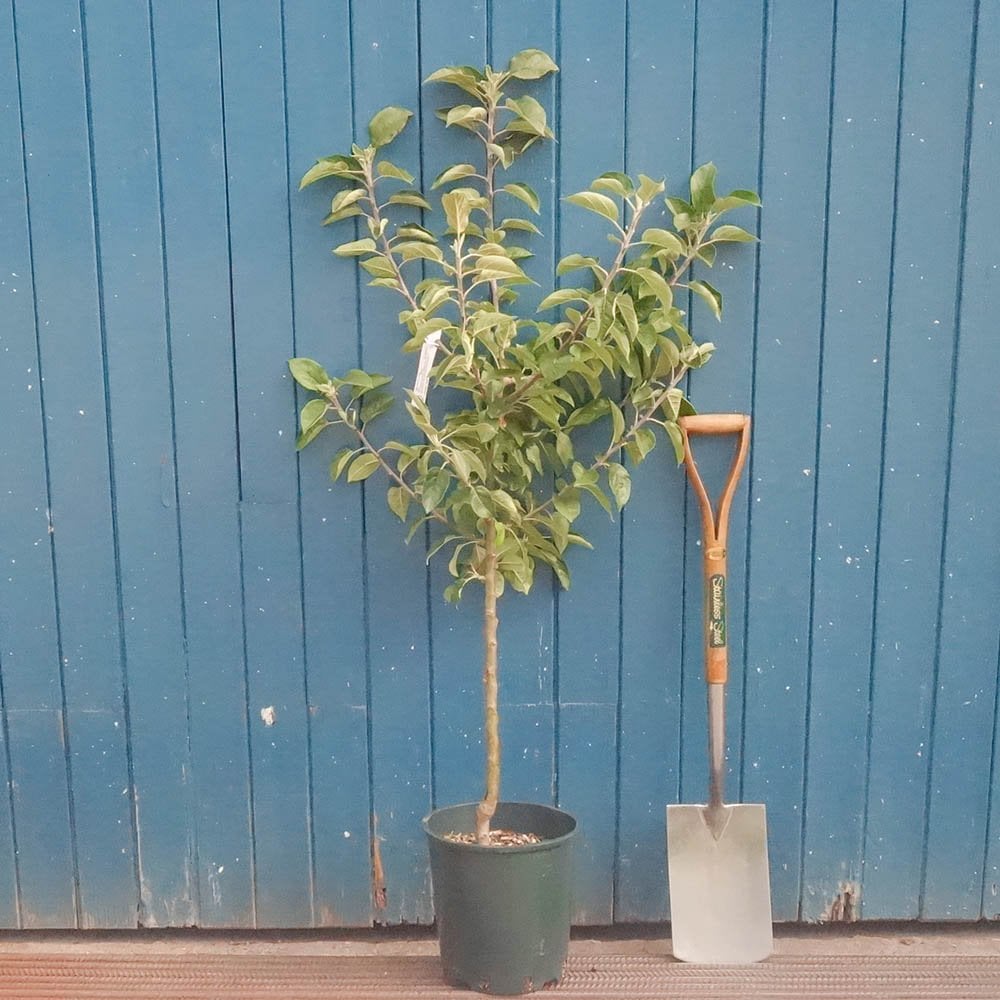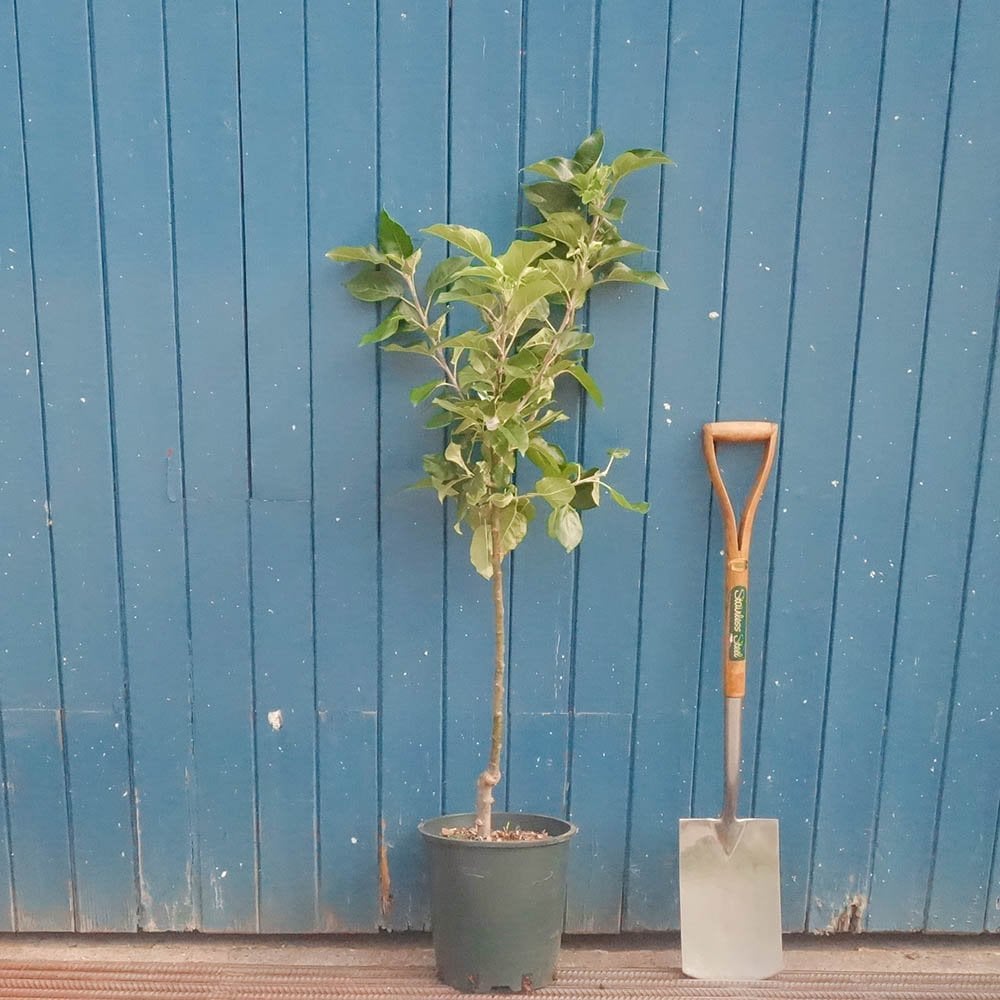Bardsey Apple Tree
Bardsey Apple Tree
Dual Purpose Eating & Cooking Apple Trees

Bardsey Apple Tree
Dual Purpose Eating & Cooking Apple Trees



Key features




Description
Bardsey Apple trees have particularly good disease-resistance but it is the lemon scent of the apples that really set them apart. The apples are dual-purpose, ideal for eating fresh, cooking and also juicing. When cooked, they turn into a delicious sweet puree. They are also enjoyable to look at, with attractive pink flushes over creamy yellow skin.
Found growing on Bardsey Island off the coast of Wales in 1998, Malus domestica 'Bardsey' was shown to exhibit an ability to thrive in challenging locations and strong disease-resistance. This makes it an excellent, trouble-tree choice for the garden. It does require a pollination partner within a half mile radius.
AKA Malus domestica Bardsey, Merlin's apple tree
| Small shrubs (1-3) | Young trees & 4+ small shrubs | Select semi-mature trees & shrubs (1-4) | All other mature trees (any quantity) | |
|---|---|---|---|---|
| Mainland UK ex. Scottish Highlands | £10 | £12 | £35 | from £55 |
| Scottish Highlands & the Islands | From £30 | |||
| Outside Mainland UK | Currently we are unable to deliver outside of Mainland UK | |||
Product Details
Key features




Description
Bardsey Apple trees have particularly good disease-resistance but it is the lemon scent of the apples that really set them apart. The apples are dual-purpose, ideal for eating fresh, cooking and also juicing. When cooked,...
Bardsey Apple trees have particularly good disease-resistance but it is the lemon scent of the apples that really set them apart. The apples are dual-purpose, ideal for eating fresh, cooking and also juicing. When cooked, they turn into a delicious sweet puree. They are also enjoyable to look at, with attractive pink flushes over creamy yellow skin.
Found growing on Bardsey Island off the coast of Wales in 1998, Malus domestica 'Bardsey' was shown to exhibit an ability to thrive in challenging locations and strong disease-resistance. This makes it an excellent, trouble-tree choice for the garden. It does require a pollination partner within a half mile radius.
AKA Malus domestica Bardsey, Merlin's apple tree
Planting & Care
Delivery Information
| Small shrubs (1-3) | Young trees & 4+ small shrubs | Select semi-mature trees & shrubs (1-4) | All other mature trees (any quantity) | |
|---|---|---|---|---|
| Mainland UK ex. Scottish Highlands | £10 | £12 | £35 | from £55 |
| Scottish Highlands & the Islands | From £30 | |||
| Outside Mainland UK | Currently we are unable to deliver outside of Mainland UK | |||
MORE TO GROW YOUR GARDEN



















